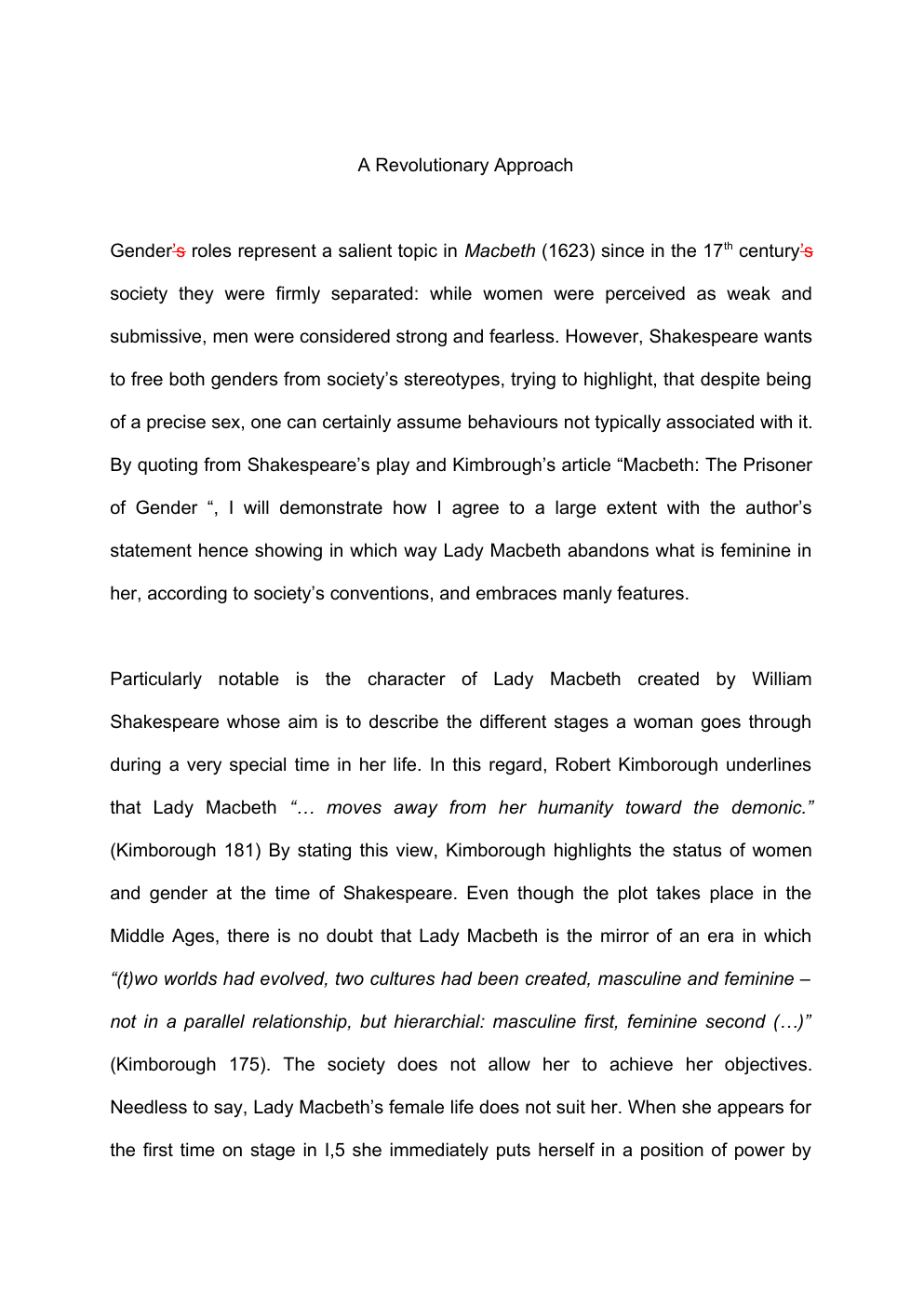Macbeth: A Revolutionary Approach
Publié le 06/05/2022

Extrait du document
«
A Revolutionary Approach
Gender’s roles represent a salient topic in Macbeth (1623) since in the 17 th century’s
society they were firmly separated: while women were perceived as weak and
submissive, men were considered strong and fearless.
However, Shakespeare wants
to free both genders from society’s stereotypes, trying to highlight, that despite being
of a precise sex, one can certainly assume behaviours not typically associated with it.
By quoting from Shakespeare’s play and Kimbrough’s article “Macbeth: The Prisoner
of Gender “, I will demonstrate how I agree to a large extent with the author’s
statement hence showing in which way Lady Macbeth abandons what is feminine in
her, according to society’s conventions, and embraces manly features.
Particularly notable is the character of Lady Macbeth created by William
Shakespeare whose aim is to describe the different stages a woman goes through
during a very special time in her life.
In this regard, Robert Kimborough underlines
that Lady Macbeth “… moves away from her humanity toward the demonic.”
(Kimborough 181) By stating this view, Kimborough highlights the status of women
and gender at the time of Shakespeare.
Even though the plot takes place in the
Middle Ages, there is no doubt that Lady Macbeth is the mirror of an era in which
“(t)wo worlds had evolved, two cultures had been created, masculine and feminine –
not in a parallel relationship, but hierarchial: masculine first, feminine second (…)”
(Kimborough 175).
The society does not allow her to achieve her objectives.
Needless to say, Lady Macbeth’s female life does not suit her.
When she appears for
the first time on stage in I,5 she immediately puts herself in a position of power by.
»
↓↓↓ APERÇU DU DOCUMENT ↓↓↓


